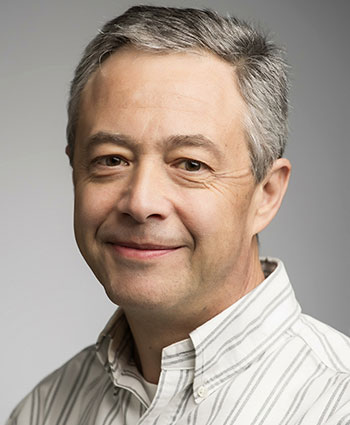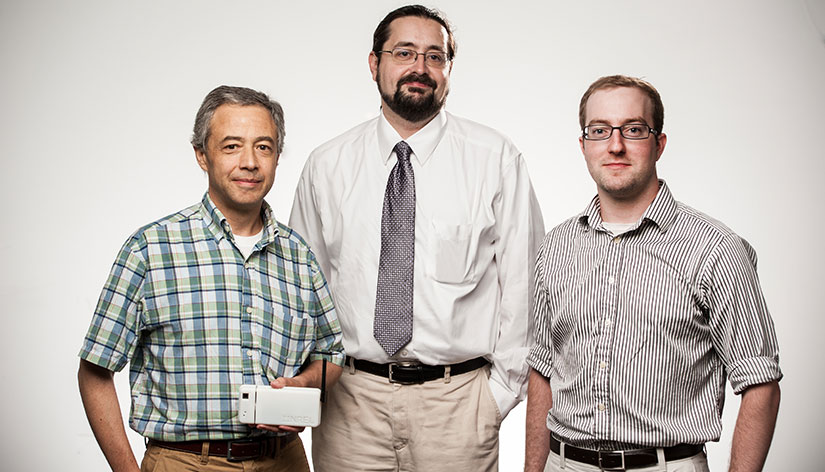Leader in Building Energy Modeling Research Reflects on Impact of NREL Career

Like many others, Luigi Gentile Polese was drawn to the National Renewable Energy Laboratory (NREL) by its mission and values. With a passion for energy and the environment, this innovator did not see an ambiguous job posting as a deterrent.
"I was intrigued by a job requisition with NREL's Commercial Buildings Research Group looking for an Energy Code Compliance Engineer," said Gentile Polese, who brought more than 20 years of experience in software engineering with top companies. "I decided to apply, but I have to admit I did not know much about building energy codes, let alone ensuring compliance."
Fortunately, he learned the position was related to developing a novel software solution to analyze and document building code compliance for commercial buildings in accordance with a California standard called Title 24. The ambitious project had the potential to expand to other states, supporting software-based code analysis and compliance at the national level for ASHRAE Standard 90.1.
After more than 12 years, Gentile Polese reflected on his time at NREL, which has included coveted industry recognitions and the expansion of NREL's building energy modeling (BEM) capabilities.
What are the top three highlights of your NREL career?
- BEM Rising. In 2010, we presented to the DOE Building Technologies Office on the newly born ZeroKit platform, the precursor of today's OpenStudio® platform of tools and software development kit (SDK): ZeroKit – Energy Simulation Support, Modeling, Standards, and Analysis Development Toolkit. That milestone represented the start of a new phase in BEM development that brought us to today's success stories around DOE BEM tools and the increasing adoption from third-party developers and industry.
- Birth of OpenStudio. During the summer of 2013, the first major open-source OpenStudio 0.0 release on GitHub went public. This marks another major milestone; GitHub is widely popular and highly collaborative. A few years later, some major overhauls and revised development processes and practices that I helped introduce brought EnergyPlus® also on a new track.
- Winner, Winner. A novel occupancy sensor, built on an earlier proof of concept started by my former manager, brought me back, leveraging my background knowledge in electronic engineering. We created the Image Processing Occupancy Sensor (IPOS), combining open-source computer vision software, embedded processors hardware the size of a gum stick, a tiny camera the size of a pea, and software with new concepts around sensor fusion and internal logic. Besides being a game-changer in the occupancy sensing space, it also garnered a prestigious R&D 100 Award and a new patent. I had the opportunity and satisfaction of seeing the technology licensed to a commercial entity, with the goal of bringing this new technology into a true commercial product.
What is your ideal future for buildings?
Smarter sensors = smarter buildings. Building flexibility and adapting to varying conditions and constraints while preserving occupant comfort will need to rely—at its lowest technological level—on a solid foundation of a reliable, secure, and intelligent network of new-generation sensors. My ideal future for buildings is a time when smart sensors will be ubiquitous in our lives, being capable of enabling new sophisticated decision-making processes by building controls (and people) to help conserve energy while ensuring comfort.
I believe that the sensors of the future will be the basis for a built environment that is even more energy efficient and therefore has potential to pose the least possible burden to our environment. These new sensors will be smarter and more intelligent—smarter because of the increased richness of information that they will be able to gather, or able to virtually generate from a multitude of physical sensed quantities and integrated with novel artificial-intelligence/machine-learning techniques. This increased richness of information will open new avenues in building controls and flexibility.
Sensors will be more intelligent because they will be capable of being self/continuous commissioning, ensuring optimal efficiency over the building's operation lifetime while ensuring reduced operational costs. Also, they will be self-diagnosing, self-healing/auto-recoverable, and self-reporting, ensuring a lower human maintenance.
Finally, and most importantly, they will be resilient and cybersecure.
After 12 years, how do you describe what you do?
Since the early days, I introduced industry practices and processes of software engineering to our highly talented research team and applied these methods to BEM software development and management. My goal has always been to bring together the best of both worlds and move BEM software to a new level in terms of higher quality, reliability, and transparency. Since then, all software has been developed "under the sun" for the team and others to see and made available as open source under a very permissive software license that facilitates third-party and industry adoption.

Along the way, my team architected, designed, and developed the OpenStudio platform from scratch using these newly introduced processes and practices. Later, these same software engineering methods used for the new OpenStudio were also applied to EnergyPlus, as well as other software projects in the ecosystem of tools that use or leverage OpenStudio. It's these machinery, processes, and structure that I helped introduce from the ground up that are used every day by our tools and analytics software development team. That is what I actually do.
Thank you, Luigi, for your dedication and innovations!
Visit the NREL Buildings website to learn more about our building energy modeling capabilities.

